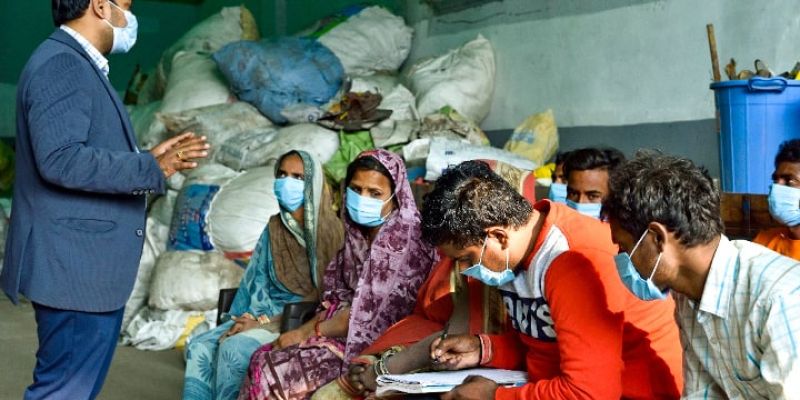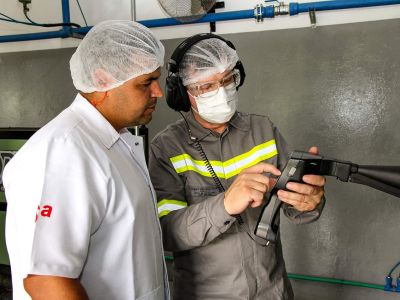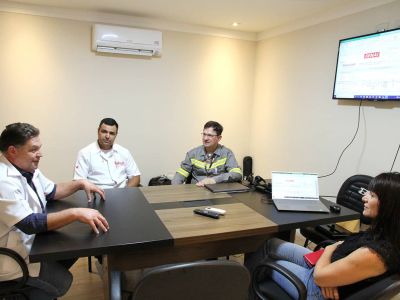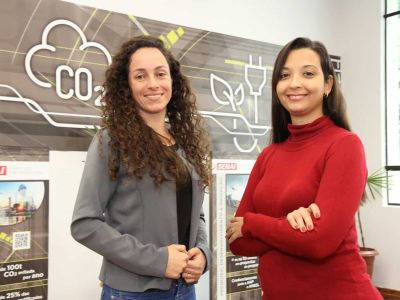Spotlight at the Detailed Preparation Phase:
What it takes to craft a detailed project proposal
The authors of this human interest story thank all NAMA Support Projects for the effort invested in providing their valuable input to help shape this story, titled ‘Spotlight at the Detailed Preparation Phase (DPP): What it takes to craft a detailed project proposal’. This document helps contribute to overall efforts to capture and share lessons learnt from our project portfolio for future improvements to the NAMA Facility’s work. For general information and guidance please see the ‘General Information Document Ambition Initaitve – Round Two for NAMA Support Projects’. Further, we want to thank staff at the Technical Support Unit of NAMA Facility for their valuable input and resources invested in the development of this story.
The NAMA Facility is a joint initiative of the German Federal Ministry for the Environment, Nature Conservation and Nuclear Safety (BMU), UK’s Department for Business, Energy and Industrial Strategy (BEIS), the Danish Ministry of Climate, Energy and Utilities (KEFM), the Danish Ministry of Foreign Affairs (MFA), the European Union and the Children’s Investment Fund Foundation (CIFF).
BEIS UK’s Department for Business, Energy and Industrial Strategy
BMU German Ministry for Environment, Nature Conservation and Nuclear Safety
CIFF Children’s Investment Fund Foundation
DPP Detailed Preparation Phase
EPE Brazil’s Energy Research Office
ESCO Energy Service Company
GHG Greenhouse Gas
GIZ Deutsche Gesellschaft für Internationale Zusammenarbeit (GIZ) GmbH
IICS Improved Institutional Cook Stoves
KEFM Danish Ministry of Climate, Energy and Utilities
MFA Danish Ministry of Foreign Affairs
MME Brazilian Federal Ministry of Mines and Energy
NAMA Nationally Appropriate Mitigation Action
NGO Non-Governmental Organisation
NSO NAMA Support Organisation
NSP NAMA Support Project
RSF Risk Sharing Facility
SENAI National Service for Industrial Training Brazil
SMEs Small and medium-sized enterprises
TI4E Brazil’s Transformative Investments for Industrial Energy Efficiency
TSU Technical Support Unit
The NAMA Facility – an agile, grant-based and multi-donor mitigation fund – efficiently distributes and mobilises finance for carbon-neutral development.
The NAMA Facility offers structured processes as well as financial mechanisms and technical support to partner countries to meet their climate goals.
The NAMA Facility provides tailor-made finance for climate change mitigation projects in all sectors, notably energy efficiency, renewable energy, transportation, waste and agriculture, forestry and other land uses (AFOLU). Partner countries, or implementing organisations on their behalf, can apply for funding through open competitive Calls. The most ambitious and feasible mitigation projects, which are called NAMA Support Projects (NSPs), are selected for support.
This support catalyses investment, strengthens capacities and triggers behaviour change, resulting in transformational sector-wide shifts to improve livelihoods, create co-benefits and establish carbon-neutral development pathways.
Since 2012
Over EUR 668 m
Currently funding 43 projects
Across 28 countries
Capacity development and training activities for low-emission rice farming
The NAMA Facility’s project cycle
For climate change mitigation projects in its portfolio to drive transformational change and achieve the best possible outcomes, the NAMA Facility promotes extensive preparation prior to launching project implementation. Following the initial NSP Outline phase, NAMA Support Projects (NSPs) must successfully complete the Detailed Preparation Phase (DPP) which lasts ten or fifteen months in total. This period of time enables NSPs to prepare a comprehensive, sound and data-driven project proposal, thereby making projects more successful in reaching carbon-neutral solutions.
The overall goal of the NAMA Facility is to identify the most ambitious and promising projects that will reduce emissions while promoting sustainable development. This involves a competitive two-phase selection process, namely the NSP Outline Phase and the Detailed Preparation Phase (DPP). Ambitious NSPs are defined by their transformation and mitigation potential, as well as their potential for leveraging further public and private finance. NSPs undergo a thorough desk-based assessment, and some of them an on-site assessment, by an independent external evaluator and the Technical Support Unit (TSU), which manages the NAMA Facility’s portfolio. NSPs which successfully pass the assessment are recommended to the NAMA Facility Board for funding for the DPP, where they experience a more detailed assessment. When NSPs successfully pass the DPP, they are subsequently recommended for implementation. While assessing projects, the NAMA Facility always takes the context of the country and sector into account and appreciates the unique nature of differing approaches.
The NSP selection process
A closer look at the Detailed Preparation Phase (DPP)
The ultimate purpose of the DPP is to prepare a comprehensive proposal for an NSP’s implementation. To successfully pass the DPP, NSPs must prepare for the project implementation with utmost diligence and provide a thorough plan on how to specifically implement their activities and address potential barriers which could arise. The DPP was given the name “Appraisal Phase” for Calls 1 – 3 but was later renamed and redesigned as the “Detailed Preparation Phase (DPP)” from Call 4 onwards, with the intention of providing more support to NSPs through additional resources and a closer exchange between NSPs and the TSU. For the DPP, the TSU and NSP agree on interim deadlines for milestones and the final deadline for submission. To provide more guidance the DPP was divided into two phases after redesigning the Appraisal Phase: NSPs must provide an interim report at the end of the first phase of DPP to provide insight into the progress achieved, which is reviewed by the TSU and Donors. Entering the second phase of DPP is permitted if progress has been achieved. Applicants should underline their project proposal with sufficient data. For this purpose, NSPs conduct feasibility studies to establish the financial mechanism, verify the mitigation potential and undertake any further activities necessary for the detailed project preparation. As an example, the NSP for Brazil’s Transformative Investments for Industrial Energy Efficiency (PotencializEE) used relevant sector studies carried out by Brazil’s Energy Research Office (EPE), which were used in the DPP’s impact models, including projected greenhouse gas (GHG) emission reduction. In collaboration with the National Service for Industrial Training (SENAI), the demand of small and medium-sized enterprises (SMEs) was specified to better understand which type of capacity gaps are currently hindering larger energy efficiency investment into Brazilian industries.
At the end of the DPP, the NSP has to submit a comprehensive proposal which, first, must cover a fully-fledged analysis of underlying assumptions and proposed financial support mechanisms; second, the substantiated calculation of expected direct and indirect GHG emission reductions and the mitigation potential; third, the institutional set-up; and fourth, the assessment and definition of safeguards for environmental, social and human rights issues, and gender considerations, among other things. This underlines the aspiration of the NAMA Facility not only to trigger reductions in carbon emissions but also positive change with respect to behavioural aspects and co-benefits (e.g. cleaner air, job creation) of carbon-neutral activities.
Four key aspects of a comprehensive proposal
Analysis of assumptions and financial mechanisms
Calculation of GHG emission reductions
Institutional set up
Environmental, social and human rights issues, and gender considerations
Energy audit carried by the NSP within a food processing industry in São Paulo
Assessment criteria
Compared to the assessment in the NSP Outline phase, a higher level of refinement (e. g. the mitigation potential and a well-designed financing mechanism based on solid background data) is expected for the NSP Proposal in the DPP. Substantiated assumptions and calculations of the GHG mitigation potential must be presented. However, in contrast to the NSP Outline assessment, a stronger focus lies on the feasibility criteria. The readiness of the financial mechanism and its underlying assumptions and calculations are of particular importance for the assessment of the feasibility, as the implementation of the financial mechanism starts within the first eighteen months of the NSP implementation.
“A successful DPP requires solid partnerships and a collaborative spirit between stakeholders across different sectors and governance levels. In our case, everything started with a workshop organised by the Brazilian Federal Ministry of Mines and Energy (MME) and the Deutsche Gesellschaft für Internationale Zusammenarbeit (GIZ) long before submitting the project outline to the NAMA Facility, which involved financial institutions, industry representatives as well as Energy Service Companies (ESCOs) discussing strategies on how to unlock energy efficiency investment potentials in Brazil.”
Marco Schiewe, Brazil – Transformative Investments for Industrial Energy Efficiency NSP (PotencializEE)
What does it take to craft a detailed project proposal?
The DPP provides the possibility for applicants to fine-tune their approaches. To craft a detailed project proposal, NSPs must demonstrate a clear approach and intervention strategy. The implementation approach needs to be complete and exhaustive, addressing potential barriers in the Implementation Phase. Therefore, the DPP requires risk mitigation planning so that an NSP considers alternative options in case one of the project activities face challenges during implementation.
Building on the expertise of NSPs that have undergone the DPP, it is essential to engage all parties that will be involved in the implementation of the project to secure a high level of commitment from partners from the outset. All actors involved must have a common understanding of the project’s goals. Close cooperation with all relevant actors, such as national implementing partners and political partners, is crucial to confirm the necessary ownership that is key to unfolding the NSP’s transformation potential. That might necessitate elaborate discussions and agreement with stakeholders on activities to be included in the project along with roles and responsibilities for each stakeholder. Actors could include the NAMA Support Organisation (NSO), local ministries, banks, private companies, civil society, technical staff, local producers, national and international experts and consultants.
Moreover, the project proposal should demonstrate that all relevant aspects are thoroughly incorporated. Certain groups and their needs should be addressed and met, which means that the gender aspects of the project’s approach should also be considered and incorporated.
Overall, successful NSPs build on local contexts and available expertise. The Tajikistan Forestry NSP, for example, explicitly based its project proposal on previously active projects in the country and sector. The prior experience and expertise of staff involved in the DPP in implementing projects can facilitate the creation of a detailed project proposal.
Tips from other NSPs for a comprehensive proposal
- Clear approach and intervention strategy
- Complete and exhaustive approach
- Address potential barriers
- Plan alternative options
- Engage all parties and secure close cooperation
- Secure a high level of commitment from partners Build on local contexts and expertise
“The actors included government, private sector, civil society along with citizens. The NGOs provided inputs related to design of the Technical Assistance component including measures related to promoting source segregation, informal sector integration and capacity development of stakeholders on low carbon waste management solutions. Citizen feedback was also included in the assessments prepared for planning the activities.”
India Waste Solution for a Circular Economy NSP

A capacity development training at IDH MRF for informal waste workers of Varanasi
Support and guidance for applicants by TSU
The NAMA Facility defines clear expectations for the DPP to help applicants meet the required quality and to address all possible barriers and open questions at an early stage. For NSPs to fulfil these high expectations, the TSU provides external support in the form of close guidance. With regular exchanges in the form of monthly calls, for example, the TSU answers questions and offers guidance on what can be expected.
The TSU also offers support to applicants in identifying and engaging external expertise if requested. While developing the detailed project proposal, applicants can consult a pool of expert on various topics (e.g. mitigation aspects). In some cases, such as the Thai Rice NAMA, financial experts visited Thailand for an on-site assessment, further supporting the development of the project proposal.
Before entering the second phase of the DPP, applicants must prepare an interim report to measure the progress of the project design and financial mechanism as compared with the NSP Outline Phase. The feedback on observations and progress provided by the TSU supports applicants to further specify project details and address possible challenges at an early stage. Critical questions from the TSU serve to push NSPs along, driving both applicants and partners alike to address certain aspects that might otherwise be ignored.
“I think the DPP is always useful. Even if the project doesn’t go ahead, it is useful to have a technical and financial analysis completed. It’s really a dedicated funding pool for a very detailed preparation for the implementation of a project, which is definitely useful because it can help projects to access other funding sources.”


Waste Solutions for a Circular Economy
Status: Implementation Phase
Selection Round: 5th Call

Revolving Loan Fund for the Uptake of Improved Institutional Cook Stoves (IICS) in Schools
Status: Detailed Preparation Phase Finalised and Not Approved for Implementation
Selection Round: 4th Call

Transformative Investments for Industrial Energy Efficiency NSP (PotencializEE)
Status: Implementation Phase
Selection Round: 5th Call

Thai Rice NAMA
Status: Implementation Phase
Selection Round: 4th Call

Forestry NSP
Status: Detailed Preparation Phase Finalised and Not Approved for Implementation
Selection Round: 2nd Call

Promotion of Electric Mobility
Status: Implementation Phase
Selection Round: 5th Call

Agriculture

Energy Efficiency

Transport

Waste Management
Potential challenges for applicants
The NAMA Facility defines clear DPP milestones and expectations, to which NSPs should adhere. Strict timelines can pose a challenge for NSPs but provide clarity, transparency and rigour. Clear communication between the applicant and all relevant partners helps prevent challenges regarding expectations from national stakeholders.
Entering the DPP does not mean that the TSU will automatically choose the NSP for implementation. Carefully and transparently communicating the high expectations of the NAMA Facility can pose a challenge for applicants during the DPP. This also includes communicating the requirement to strictly maintain a separation between NSOs and governments. Due to a relatively long preparation phase, NSPs might face the challenge of reduced motivation among stakeholders over time. A high degree of flexibility and strong sense of ownership and identification by all actors can help them to endure the project development process and changing context factors. A high level of flexibility is also key to overcoming unexpected challenges during the DPP.
“The preparatory work, which was done in the Appraisal Phase was quite useful. It led to a good quality of the proposal itself, but also a high commitment from the partner side, which of course is also very important, but also raises expectations – so transparent communication of expectations on both sides, partners and the TSU is important.”

Successes and spill-over effects of DPP
The long timeline and high requirements of the DPP lead to several positive outcomes and spill-over effects. The extensive preparation during the DPP through analyses and case studies may attract financial partners as it demonstrates the advantages of carbon-neutral solutions. In the case of Brazil – Transformative Investments for Industrial Energy Efficiency NSP (PotencializEE), the energy performance of best-available industrial technologies and the underlying cash flows of energy savings motivated several financial institutions to sign up to join the NSP. Furthermore, pay-back periods of such investments gave an incentive to participate in the NSP’s implementation.
Even if NSPs are not selected for implementation, the meticulous preparation of the projects can create a sound basis for future project implementation. In the case of the NSP Uganda – Revolving Loan Fund for the Uptake of Improved Institutional Cook Stoves (IICS) in Schools was circulated to other potential Donors, who expressed interest to pick up parts of the projects for implementation, which was only possible due to the detailed proposal developed before.
Unexpected challenges and barriers can always occur during the implementation of ambitious projects as the NSPs. A successful DPP however may result in a comprehensive project design with a detailed plan for technical and financial components as well as strong buy-in from all relevant stakeholders and project partners, which enables gradual progress towards carbon-neutral solutions.

“The most important success has been the ability to create a strong buy-in by the governmental partners and the good inter- and intra-ministerial cooperation, which enabled swift progress.”

Lucius Mayer-Tasch, Cabo Verde – Promotion of Electric Mobility




